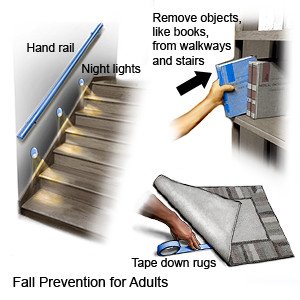Energy Conservation Techniques
Medically reviewed by Drugs.com. Last updated on May 6, 2024.
Why are energy conservation techniques important?
Energy conservation techniques are used to decrease dyspnea and the feeling that you are using up oxygen. They can also decrease the production of carbon dioxide and lower your heart rate. These techniques decrease the energy you use when you do activities of daily living (ADLs). Pulmonary rehabilitation will help you learn more about energy conservation techniques. Ask your healthcare provider if pulmonary rehabilitation is right for you.
What are some ways I can conserve my energy?
- Rest before difficult activities. Stop if you become short of breath or fatigued.
- Write a plan for your daily and weekly activities. Make sure the biggest energy-consuming activities are spread throughout the week. For example, do not shop for groceries and vacuum on the same day. It is okay if you do not complete the entire activity or plan.
- Make a note of the times you have the most energy. Schedule the most difficult activity during that time. If you have more energy in the morning, you may want to cook all the meals for the day then.
- Schedule relaxation time. Relaxation can help you restore energy.
- Ask friends and family members to do some activities for you. Your healthcare provider may be able to assist you with finding community services to help.
- Lower the number of trips up and down stairs. Put a commode downstairs if your bathroom is upstairs. Put a commode upstairs if your bathroom is downstairs.
How can I conserve energy as I do my personal care?
Perform as much personal care as you can while you are sitting down. You use more energy if you stand to do these activities.
- Brush your teeth, wash your face, shave, and put on makeup while you are sitting down. Support your arms on the sink area while you do these and similar activities.
- Use a shower chair to sit while you shower.
- Put on a robe after you shower so you do not have to use energy to dry yourself. You may need to rest after your shower, before you put on your clothes.
- Have grab bars installed in your bathroom. Grab bars can help you stand and help prevent falls. Elevate your toilet seat. You may also need to elevate the chairs in your home. You use lots of energy getting to a standing position.

- Use assistive items for personal care, such as a long-handled brush and shoe horn.
- Wear slip-on shoes so you do not have to bend over to tie them.
How can I conserve energy as I do my household chores?
- Put items on shelves that are at eye or waist level. It takes more energy to reach over your head or bend at your waist.
- Use a dish drain rack instead of hand drying dishes.
- Sit on a tall stool in the kitchen while you cook or wash dishes.
- Do not carry or lift items. Push, pull, or slide them. If you have to lift and carry, use your legs to lift. Carry items close to your body.
What can I do to feel more connected to others?
Chronic lung disease can make you feel isolated. You may feel too tired to be active with other people. Schedule some social time every week. You may feel more connected and less isolated if you socialize with family and friends. It may only be for ½ hour. Invite friends or family over to your house, or talk to them on the telephone. You may want to join a support group of people who have a chronic lung disease.
Care Agreement
You have the right to help plan your care. Learn about your health condition and how it may be treated. Discuss treatment options with your healthcare providers to decide what care you want to receive. You always have the right to refuse treatment. The above information is an educational aid only. It is not intended as medical advice for individual conditions or treatments. Talk to your doctor, nurse or pharmacist before following any medical regimen to see if it is safe and effective for you.© Copyright Merative 2024 Information is for End User's use only and may not be sold, redistributed or otherwise used for commercial purposes.
Learn more about Energy Conservation Techniques
Care guides
Further information
Always consult your healthcare provider to ensure the information displayed on this page applies to your personal circumstances.
